




This month, we explore the growing trend of retailisation in the alternatives space. Morgan Stanley Investment Management’s Federico Vettore highlights the rapid uptake of semi-liquid evergreen funds among European individual investors. Dechert’s Marianna Tothova focuses on Europe’s evolving regulatory landscape, where ELTIFs and LTAFs are enabling greater retail access to private assets - tempered by conservative investor behaviour, liquidity constraints and compliance demands.
S64’s Tarun Nagpal discusses the broader shift toward more flexible investment structures. Vistra’s Matthew Podolsky examines the key drivers of retailisation and the operational complexities it presents from an administrator’s perspective. In Letter from America, Prosek's Mark Kollar writes that a recent SEC no-action letter eases investor verification and marketing rules for 506(c) funds could pave the way for more public-facing private fund strategies.


Looking back at March and markets offered a preview of the turbulence (and confusion) we’ve seen extend into April. Volatility picked up significantly, driven by rising trade tensions and what were then only tariff threats from the US (for a deeper dive, read our market review). In this unsettled environment, the HFRI Fund Weighted Composite Index fell 1.1%, with equity-focused managers particularly hard-hit.
The HFRI Equity Hedge (Total) Index declined 2.0%, led by steep losses in technology, which fell 6.2%. Healthcare also struggled, down 3.6%, while Multi-Strategy funds lost 3.3%. Bright spots were few, with only Energy/Basic Materials finishing in the green, up 0.9%.
Event Driven strategies also faced a difficult month.
The HFRI Event Driven (Total) Index dropped 2.4%, as Activist and Special Situations funds declined 6.5% and 4.7%, respectively. Merger Arbitrage was the only segment to post a gain, up 0.4%.
Against this backdrop, macro strategies came into their own. The HFRI Macro (Total) Index posted a 0.3% gain, with Discretionary managers benefiting from market volatility. The HFRI Discretionary Thematic Index rose 2.0%, and Discretionary Directional added 1.6%. However, Systematic Diversified and Directional strategies were caught on the wrong side of market moves, both down 0.4%.
Relative Value strategies were broadly flat. Within this space, the Volatility Index rose 1.1%, but Fixed Income Convertible Arbitrage lost 0.8%.
Regionally, North America bore the brunt of the sell-off, with equity-heavy exposure pushing returns down 2.9%. In contrast, India delivered a standout performance, up 6.3%, while Latin America gained 3.2%. China was more subdued, edging up 0.5%, and Japan and Western Europe posted modest gains of 2.8% and 1.0%, respectively.

EQT Group closed its sixth infrastructure fund, EQT Infrastructure VI, at its €21.5 billion hard cap, marking one of the most significant infrastructure fundraises to date and is 35% larger than the previous vehicle. The oversubscribed fund, backed by a global mix of institutional and private wealth investors, reflects confidence in EQT's strategy of investing in essential infrastructure aligned with themes like digitalisation, decarbonisation and energy transition. Around 50% has already been committed, with the fund deploying capital across 12 investments globally, including digital infrastructure, environmental services, and cold storage logistics.
Smaller Swedish PE house, Pophouse Entertainment - focused on music and entertainment investment and co-founded by ABBA's Björn Ulvaeus and EQT founder Conni Jonsson - closed its debut fund, Pophouse Fund I, with over €1.2 billion raised. Led by CEO Per Sundin and chaired by EQT's Head of Real Assets, Lennart Blecher, the firm has already deployed around 30% of the fund into artists including KISS, Cyndi Lauper, Avicii, and Swedish House Mafia. Pophouse's artist-centric strategy focuses on acquiring and integrating publishing rights, recording rights, and name, image, and likeness (NIL) rights to consolidate ownership of iconic music IP, aiming to amplify artists' legacies across formats while delivering value to creatives and investors.
While fundraising is undoubtedly hard work, it is far from impossibleas demonstrated by London-based Oakley Capital's successful raise for its sixth flagship private equity fund, Oakley Capital Fund VI, which secured €4.5 billion in only six months. Bloomberg reports that the fund continues Oakley's strategy of backing founder-led, mid-market businesses across Europe, focusing on the technology, education, consumer and business services sectors. Targeting companies with enterprise values ranging from €100 million to over €1 billion, the fund will make equity investments starting from €125 million.
Click here to see all the listings

(cont.)
San Francisco-based softwarefocused private equity firm Turn/River Capital announced the final close of its sixth fund, Turn/River Capital Fund VI, securing $2.5 billion in total commitments. This fund is 85% larger than its predecessor, which raised $1.4 billion in 2022. The oversubscribed fund exceeded its initial target of $2 billion, reflecting
strong demand from existing and new limited partners. Turn/River Capital specialises in growth and expansion investments in software companies, applying a proprietary growth engineering strategy to accelerate growth and build enduring value.
Blackstone announced the final close of its latest European real estate fund, Blackstone Real Estate Partners Europe VII, securing €9.8 billion ($10.6 billion) in capital commitments, making it the largest European real estate drawdown fund ever raised based on third-party commitments. This brings the total available capital across Blackstone’s opportunistic real estate strategies in Europe, Asia, and globally to nearly $47 billion. The fund is part of Blackstone’s broader opportunistic real estate strategy and is focused on identifying and capitalising on value-add investment opportunities across Europe.
Falfurrias Capital Partners closed its sixth fund at $1.4 billion, surpassing its target and marking a sharp increase from its previous $850 million raise in 2021.
The Charlotte-based private equity firm now manages $1.8 billion in active funds and focuses on software, fintech, business services, and food sectors.

ICG closed its fifth GP-led secondaries fund, ICG Strategic Equity Fund V, with $11 billion in commitments - well above its $6 billion target and more than double the size of its predecessor. The oversubscribed fund reflects continued investor interest in GP-led secondary opportunities, particularly single-asset continuation vehicles. Since launching its Strategic Equity strategy in 2014, ICG has committed over $19 billion to such transactions, focusing on high-quality assets in
North America and Western Europe in partnership with top-tier private equity sponsors.
In parallel, ICG raised €3 billion for its latest flagship credit vehicle, ICG MidMarket Fund II, highlighting continued demand for private credit strategies amid ongoing public market volatility.
The fund targets mid-market companies across Europe, offering flexible capital solutions through a mix of senior and subordinated debt.
Backed by a diverse global investor
base - including pension funds, insurers and sovereign wealth fundsthe fund aims to address the financing needs of high-quality businesses seeking alternatives to traditional bank lending.
These successful raises underscore ICG's strong track record and the growing prominence of private credit in the evolving financial landscape.


Pantheon announced the final close of its Pantheon Secondary Opportunities Fund II (PSOF II) and related vehicles, securing $1.1 billion in commitments - nearly double the size of its $624 million predecessor in 2021. Focused on GP-led secondaries market, the fund targets high-quality managers and continuation vehicles with strong alignment and value creation potential. Pantheon has deployed $6.8 billion across GP-led deals over the past 14 years.
DWS and Deutsche Bank announced a partnership to expand private credit opportunities by combining Deutsche Bank's origination expertise with DWS's €110 billion alternatives platform.
Through this arrangement, DWS gains preferred access to asset-based finance and direct lending originated by Deutsche Bank. Patrick Connors, formerly Deutsche Bank's European Head of Global Credit Financing, will
With institutional partnerships in vogue, Emirates NBD partnered with BlackRock to launch a dedicated private credit and alternative investment platform tailored to the UAE's growing wealth market. The initiative will provide the bank's high-networth and affluent clients access to a range of private market strategies, including private credit, infrastructure, and real estate. The platform draws on BlackRock's global Alternatives business, which currently manages over $450 billion in assets, and links to
NBD, which today manages assets exceeding $215 billion. Reflecting a shift towards more sophisticated wealth management, the launch was hailed by Marwan Hadi, Group Head of Retail Banking and Wealth Management at Emirates NBD, as a milestone in expanding the bank's investment capabilities. He emphasised the bank's commitment to "bringing world-class investment access to clients in the UAE and wider region."
lead DWS's private credit division. The collaboration comes amid a broader industry trend of growing private credit partnerships as investors seek alternative sources of yield.


(cont.)
Warburg Pincus LLC signed a Memorandum of Understanding with Hassana Investment Company, one of the world's largest pension fund managers overseeing approximately $300 billion in assets.
The strategic partnership aims to explore investment opportunities in Saudi Arabia, aligning with the Kingdom's Vision 2030 objectives.
By leveraging Warburg Pincus's global expertise and Hassana's regional
presence, the collaboration seeks to invest in high-growth sectors across various asset classes, contributing to Saudi Arabia's long-term economic growth.
Such alliances reflect a growing trend of investment firms partnering to enhance capabilities and market reach.
Other examples include the collaboration between Apollo Global Management, Inc. and Motive Partners, which established Lyra Client Solutions
Holdings, a client-services company focused on institutional investors and asset managers in private markets.
Lyra aims to improve fund managers' efficiency in handling investments from institutional and high-net-worth investors. These partnerships highlight the industry's shift toward strategic collaboration.


Boston Celtics, one of the NBA's most iconic and successful franchises, agreed to be sold for a record $6.1 billion in a landmark deal that underscores the surging value of professional sports teams. The transaction includes a group of investors led by private equity giant Sixth Street, which will acquire a significant stake in the team while maintaining existing operational leadership.
Veteran Celtics executive Bill Chisholm played a central role in orchestrating the deal, guiding the ownership transition and ensuring strategic alignment between legacy stakeholders and new investors.
The $6.1 billion price tag not only sets a marker for NBA franchise valuations but also reflects the Celtics' global brand strength, historic legacy, and commercial potential.
This sale is part of a broader wave of private equity's deepening
involvement in global sport, as institutional investors increasingly view franchises as durable, cashgenerating assets with long-term appreciation. Arctos Sports Partners and Dyal Capital are just two examples of firms to have entered the sports ownership arena through minority and majority stakes.
Regulatory changes across major leagues, including the NBA, have enabled such deals, opening the door for private capital to replace traditional ownership models.
With figures like Chisholm helping to manage these transitions, the influx of institutional capital is reshaping the economics of sport, elevating team valuations, driving global expansion and introducing more structured, growth-focused governance models.
Millennium Management committed $4 billion to two high-profile allocations.
On 25 March, the firm allocated at least $2 billion to Pleasant Lake Partners, a long/short equity fund founded by Jonathan Lennon, formerly of JAT Capital and Goldman Sachs. The
separately managed account focuses on fundamentals-driven bets in consumer, telecom, media, and tech.
Earlier in the month, Millennium seeded Lane42 Investment Partners with a $2 billion capital commitment
and a minority equity stake.Launched by former Ares partner Scott Graves, the firm targets inefficiencies across public and private markets, especially where debt and equity converge.
Despite growing competition from global financial hubs like London, Singapore, and Hong Kong, New York remains the undisputed centre of billion-dollar hedge funds, home to 164 firms and firmly cementing its role as the industry's beating heart. Its enduring dominance stems from a potent mix of access to top-tier talent, proximity to institutional capital, and a deeply
rooted financial infrastructure.
According to data from With Intelligence, London ranks second, roughly half New York's size. Even as remote work and regulatory changes open doors for relocation, the gravitational pull of Wall Street's ecosystem continues to assert New York's unrivalled position atop the hedge fund hierarchy.


The art of succession planning is critical in ensuring an investment firm's long-term stability and success.
In the past month, Business Insider has highlighted the pivotal roles Alan Howard and Chris Rokos continue to play in their respective firms, underscoring how key figures in the
hedge fund industry maintain influence and control.
In typical Millennium fashion, Izzy Englander has taken a distinctive approach to succession, with a structured a model that offers senior individuals stakes in Millennium, creating long-term alignment and
BlackRock CEO Larry Fink released his annual Chairman's Letter to Investors on 31 March 2025. In it, he emphasised the importance of democratising access to private markets, advocating for broader investor participation in assets such as private equity and infrastructure to address economic disparities and enhance retirement security. Fink highlighted the potential of tokenisation to enable fractional ownership, thereby lowering
barriers to entry for individual investors. He also proposed rethinking traditional portfolio allocations, suggesting a shift from the conventional 60/40 split between equities and bonds to a 50/30/20 model that includes private assets.
Notably, this year's letter omitted discussions on diversity, equity and inclusion (DEI), and sustainable investing frameworks - topics Fink had previously emphasised.
incentivising top talent to stay committed to the firm's future. Such an approach is designed to retain high-calibre professionals and ensure a smooth transition when the time comes for leadership changes, a move that should secure Millennium's long-term future.


It’s a toss-up figuring out what has been the most used or overused word this past week. Within the mix, “uncertainty” is likely at the top of the list. The alts markets, however, tend to find opportunity in times like this when there is little to no clear picture on inflation, interest rates or the long-term direction of the global economy. For sure, the watch word today is caution, and it may be private-markets family holdback for the time being.
So to move away from the market action, let’s examine a seemingly niche SEC discussion in recent weeks that may clear the air a bit and ease some burden on how issuers can verify accredited investors (it’s a lot easier) and solicitation around fundraising (it’s a little more relaxed).

more confidence and a clearer path to verify investors.
This also plays out in another way and this is where I put on my communications-advisor hat. With easier verification in place, issuers now have fewer restrictions on how to market or advertise their privateinvestment funds to US investors (underscore US.).
With easier verification in place, issuers now have fewer restrictions on how to market or advertise their private-investment funds to US investors...
In short, the SEC issued a no-action letter that provides guidance on rule 506(c) of the Regulation D private securities offerings last month on a few matters. (The response from the SEC was prompted by a request from law firm Latham & Watkins LLP on its interpretation on the matter.)
First and foremost, according to the guidance in agreement with Latham & Watkins, issuers may rely on just a minimum investment amount or as in the words of the SEC to be a “relevant factor” in whether a potential buyer is an accredited investor. These minimum amounts are reportedly set at $200,000 for individual and $1 million for corporate entities.
This greatly simplifies the verification process, eliminating past practices of reviewing tax returns, bank statements and third-party certifications. Easier, peasier. But just as important, issuers now have much

As someone who has spent years advising clients not to talk in any way shape or form about their fund while fundraising unless they want to suffer the wrath of the SEC, the new guidance suggests those hardball lectures are now a little too hardball.
Issuers may now consider broader marketing channels to reach a wider audience and even discuss funds to the media during the raise.
That’s a significant difference that will no doubt take time for issuers to fully understand and be comfortable with before we see more general solicitation in the form of advertising and direct conversations with the media.
A few caveats: The funds must be registered as a 506(c) versus 506(b) and must consider state securities regulations, which can vary. We may also see funds re-register as 506(c) from 506(b). And this is all to say, that we may one day see a convergence in how traditional asset managers and GPs market themselves and communicate to stakeholders with even the most advanced leveraging tactics such as TV advertising or sports sponsorship.
Mark Kollar Partner, Prosek Partners



I believe absolutely that there is no place in our profession for certainty, because we live in an uncertain world. And I have a slight idea of what's going to happen tomorrow. I have a suspicion of what's going to happen in a year. But I absolutely don't think I know for sure. And so how can anybody be certain about anything?
Howard Marks, Co-Founder, Oaktree Capital Management


In the last several years, individual investors have increasingly embraced semi-liquid evergreen funds to access private markets investments for their portfolios. These funds tend to offer some of the same benefits as drawdown funds - namely, diversification and attractive returns - but with lower investment minimums, periodic liquidity and more efficient tax reporting. They do so without capital calls or upfront funding. Individual investor enthusiasm for these new structures have made it one of the fastest growing segments of the asset management industry. According to Pitchbook, in the United States. alone, net assets under management as of September 30, 2024 totalled $381 billion across 351 semi-liquid evergreen funds as of Q3 2024, with more than half of these
funds having been launched just in the last four years. This trend toward broader access to alternative investments is also gaining ground in Europe. The current environment seems particularly supportive, as public budgets of many countries faces pressure and calls for greater involvement from private capital get louder. Asset managers are well-positioned to facilitate this channelling of private wealth into the real economy. There is strong alignment of interests among private investors, asset managers and the European regulators with the collective aim of driving the economy forward. Introduced in 2015, European Long-Term Investment Funds (ELTIFs) created a mechanism for private money to support long-term


The investment opportunities available in private markets dwarf those in the public markets, and this is reflected in investment flows.

The more recent introduction of ELTIF 2.0 has expanded the availability of these funds to a broader population of investors, further linking private assets to the modernisation of the European Union.


projects and the economy, providing investors access to non-traditional or private assets. The more recent introduction of ELTIF 2.0 has expanded the availability of these funds to a broader population of investors, further linking private assets to the modernisation of the European Union. At the same time, a wider pool of investors are looking to invest in private markets as a way to potentially achieve higher returns and to diversify away from public markets.
The investment opportunities available in private markets dwarf those in the public markets, and this is reflected in investment flows. Currently, private market assets globally amount to about USD 13 trillion. According to McKinsey’s Global Private Markets Review 2024, new capital inflows into the segment from private clients are expected to increase by about 1.5 trillion in 2025 alone. This is a remarkable figure, especially considering that most of the total assets in private markets today are held by institutional investors. To appreciate the potential global
growth, it’s worth noting that according to Preqin’s 2024 report Fundraising from Private Wealth 23% of U.S. high net worth investor portfolios are already invested in alternatives, of which 85% is in private markets. In Europe, by contrast, this percentage is just above zero.
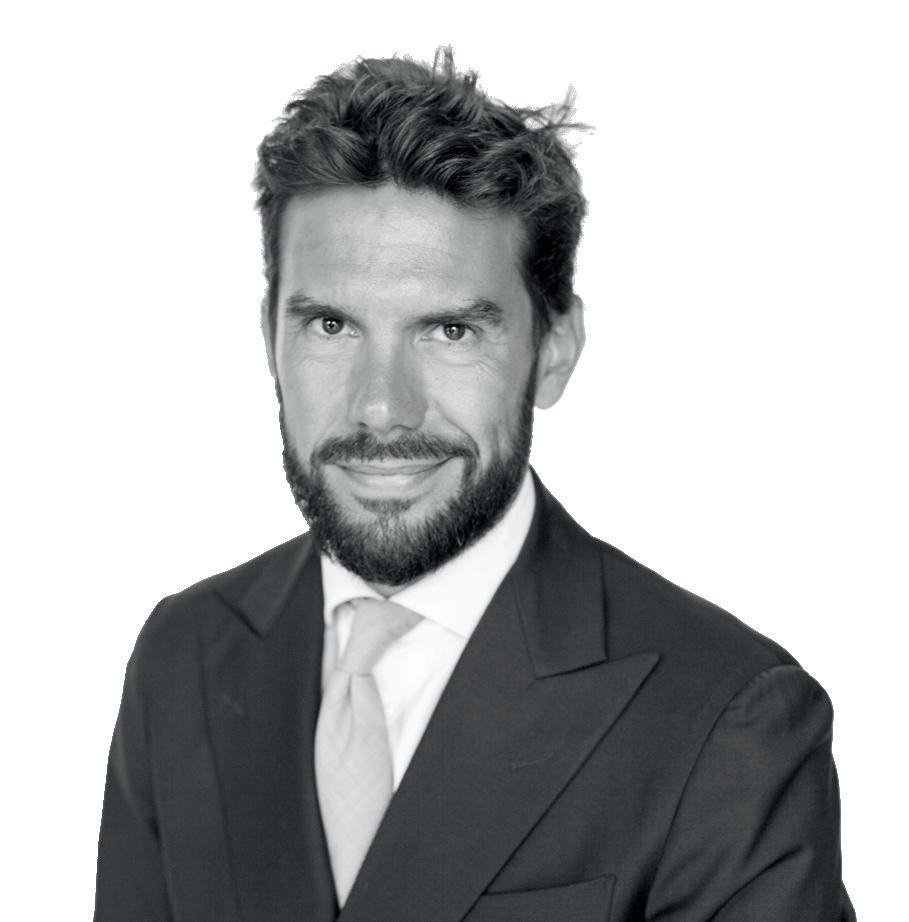
The direction of growth is clear, but there remain important considerations for investors. Top among these are understanding that semi-liquid funds do not guarantee liquidity during times of market stress. Furthermore, the cash held in these funds to support a liquidity mechanism can dampen overall returns when compared to drawdown funds. Investors should pay close attention to the alignment of fee structures with manager incentives for cash management and
Federico Vettore, Head of European Private Markets for Wealth, Morgan Stanley Investment Management

Over the past decade, democratisation of private assets or, retailisation, has been an important subject of discussion in the asset management industry. In mature markets such as the U.S., where there is a knowledgeable investor base used to manage their own assets on the financial markets, the BDCs have been a striking success.
EU policy makers agree that it is essential to unlock the EU savings channel to raise funds back into the economy and to finance, among others, EU businesses. The EU and UK also set out to create vehicles which would break the traditional divide between professional and retail investor products and enable retail and/or HNW investors to access private assets, through ELTIF and LTAF vehicles. While this success was rather limited at first, the recent changes to the ELTIF framework means there is a lot of potential for growth.
The policymakers’ interests align with those of the managers, private banks and private wealth distribution channels who are seeking to access (or invest) EU retail and HNW investors’ money.
For EU retail investors, the advantages are also obvious, such as further diversification and opportunities to include counter-cyclical assets (e.g. private credit) in retail investment portfolios. So why is it taking so long for retailisation to fully blossom in the EU? In addition to EU investors being rather conservative, the main issues seem to be liquidity and returns.
If managers decide to launch an open-ended fund, the asset liquidity, valuation and their alignment with investment strategy and redemption terms are major regulatory topics, which are now slowly settling in the context of semi-liquid and evergreen funds trends. Indeed, institutional investors are also increasingly


Managers can now... make closedended funds (such as retail ELTIFs or Luxembourg Part II funds) available to retail investors. This will cause fewer headaches when aligning the asset valuation and liquidity parameters...



Interestingly, ELTIF 2.0 regulation provides a framework for managers to create a secondary market for ELTIF interests or units. However, we may need to wait for tokenization to unlock the full potential of access by retail investors to such funds.
looking to invest in funds with some regular liquidity, or funds which allow them to remain invested long term until they need to exit. However, any potential solutions in a regulated retail fund must also align with the detailed regulatory framework, which prescribes, in certain circumstances, holding of a certain portion of liquid assets (e.g. ELTIF) which will dilute the returns from private assets in the portfolio. This is a compromise that retail investors need to accept in return for regular liquidity.
Managers can now also make closedended funds (such as retail ELTIFs or Luxembourg Part II funds) available to retail investors. This will cause fewer headaches when aligning the asset valuation and liquidity parameters (e.g. if the fund is leveraged) and will allow investors to be fully exposed to private assets, however, retail investors may not be able to invest and block their savings for the

required period (typically 8-10 years). As a result, these vehicles may be currently suitable rather for HNW investors or the pension portion of retail investors' money. For these purposes, the development of secondary market options is crucial. While transfers of fund interests between professional investors and LPled secondaries are common, they are neither quick nor cheap options, making them inaccessible to retail investors. Interestingly, ELTIF 2.0 regulation provides a framework for managers to create a secondary market for ELTIF interests or units. However, we may need to wait for tokenization to unlock the full potential of access by retail investors to such funds.
Marianna Tothova, Partner, Dechert LLP

Tarun Nagpal, Founder & CEO, S64
Private markets, once the domain of institutional investors and 10-year closedend commitments, have opened to a broader audience of private wealth. Key to this transformation has been the rise of semi-liquid evergreen fund structures – perpetual private market funds with periodic liquidity windows. These innovative vehicles – including Europe’s updated ELTIF 2.0, the UCI Part II and the UK’s Long-Term Asset Fund (LTAF) to U.S. interval funds, non-traded BDCs, and REITs, are fundamentally changing how private wealth investors, and retail investors in particular, access alternatives. We are entering a new era in private markets – one marked by greater access, innovation, and collaboration.
The momentum behind semi-liquid evergreen funds is undeniable. Investors who were once dissuaded by illiquidity, large ticket sizes, and capital call
complexities are finding these new structures far more palatable. Over the past 5 years, the number of evergreen funds has nearly doubled to 520, representing at least $350bn of net asset value (Preqin).
This trend aligns with a broader industry movement towards democratisation. Currently, private investors represent nearly half of global wealth—estimated at over $140 trillion—yet account for only 16% of private markets' total assets under management, which currently stand at $13.1 trillion The runway for growth remains extensive, and semi-liquid evergreen funds are a crucial bridge to narrowing this gap.
Many in the wealth management channel have embraced the semi-liquid evergreen fund structure as their preferred private markets entry-point. Their open-ended nature means that capital can be deployed on day one and begin compounding sooner.


The momentum behind semi-liquid evergreen funds is undeniable. Investors who were once dissuaded by illiquidity, large ticket sizes, and capital call complexities are finding these new structures far more palatable.
Tarun Nagpal, S64

It is hard to find a private markets GP today that is not actively exploring the private wealth opportunity set and exploring the viability of launching a semi-liquid evergreen fund. For private wealth intermediaries and their clients there is now a comprehensive and growing menu of private assets in semi-liquid evergreen format. The market is populated with a diversity of opportunity across traditional strategies, multi-manager, multi-strategy and multi-asset semi-liquid funds. We have seen launches from GPs as diverse as Apollo, Ares, Hg, Macquarie and Vista. Private banks and wealth managers are now starting to manufacture their own internal semiliquid evergreen funds of funds as an alternative to traditional closed-ended vintage programmes.
Private markets GPs are becoming ever more creative in structure, liquidity management, and investment strategy to make these vehicles work for a broader investor base. Many semi-liquid evergreen funds maintain a liquidity “sleeve” – a portion in cash or public securities – to facilitate periodic redemptions. Often secondaries and co-investments are used to quickly deploy capital and reduce cash drag, ensuring that new inflows are put to work efficiently.
No revolution comes without challenges. Semi-liquid evergreen funds by nature combine features of openended and closed-ended funds, which introduces operational complexity. GPs and their service providers must master new processes: valuation of illiquid assets on a continual basis, managing subscriptions and redemptions, and handling liquidity mismatches. Combining liquid and illiquid components necessitates expertise ranging from establishing valuation procedures and NAV calculation frequency to implementing mechanisms such as gates and series. Onboarding investors into these funds can also be cumbersome today.
Regulatory complexities also persist, notably through country-by-country variations. Europe has taken a big leap with ELTIF 2.0, which provides a unified passport to market evergreen funds to retail investors across the EU, along with tax incentives
and a clearer rulebook. The UK introduced the LTAF, and the U.S. has long-standing semi-liquid structures – interval funds, tender offer funds, and non-traded BDCs REITs. Other regions are catching up: in Asia, markets like Hong Kong, Singapore and Australia are at the forefront of adopting evergreen fund offerings, while others are still developing the necessary distribution and regulatory ecosystem. These inconsistencies complicate efforts to distribute evergreen funds across multiple jurisdictions seamlessly.
Additionally, investor education remains a pressing issue. The term "semi-liquid" itself may inadvertently suggest more immediate liquidity than these structures realistically offer. Clear and consistent messaging is crucial to managing investor expectations, preventing mis-selling, and ensuring that participants fully understand the liquidity profiles and risks inherent in these funds.
This is where fintech solutions platforms such as S64 come into the equation, serving as outsourced product manufacturers and operations hubs, seamlessly integrating funds, private banks and fund administrators. Through standardized regulatory compliant workflows adaptive to cross-border regulatory regimes, fintechs are critical facilitators of scale and operational efficiency.
Despite these challenges, the trajectory of semiliquid evergreen is decidedly upwards. The reason for optimism is simple: these structures address a real need. They allow wealth managers and family offices to craft portfolios that include the return potential of private equity, private credit, real estate, and infrastructure without the severe liquidity lockups of the past. They allow successful GPs to expand their investor base and secure stable, longduration capital. And they create opportunities for individual investors (and their advisors) to benefit from institutional-quality assets and managers. In short, evergreen funds are central to the democratization of private markets – a theme that is only growing stronger.

Tarun Nagpal, Founder & CEO, S64





Explore our insights on marketing in the ever-evolving world of private markets. The 2025 handbook delivers actionable strategies and best practices to empower managers, marketers, investor relations and communications professionals.



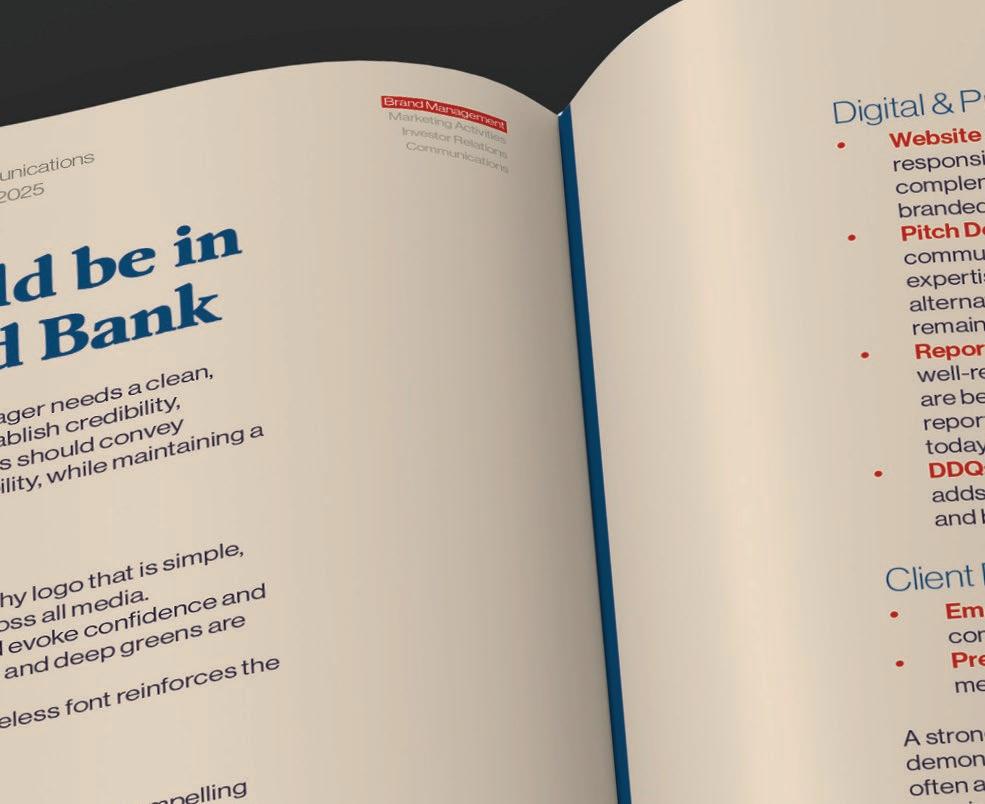
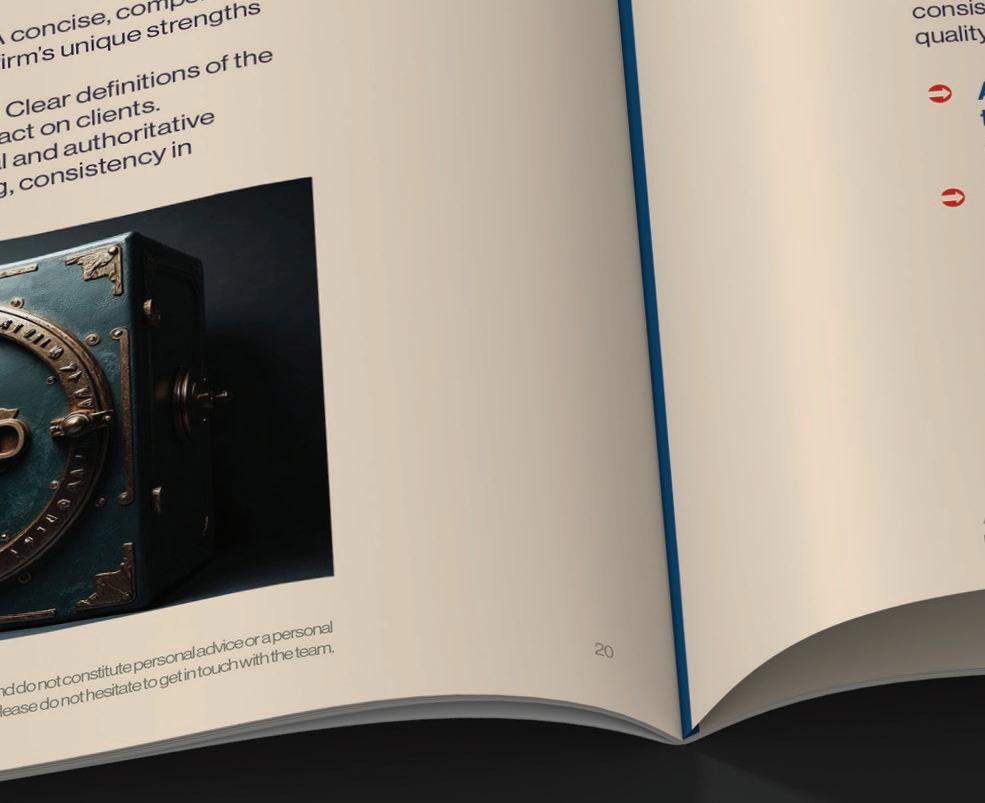


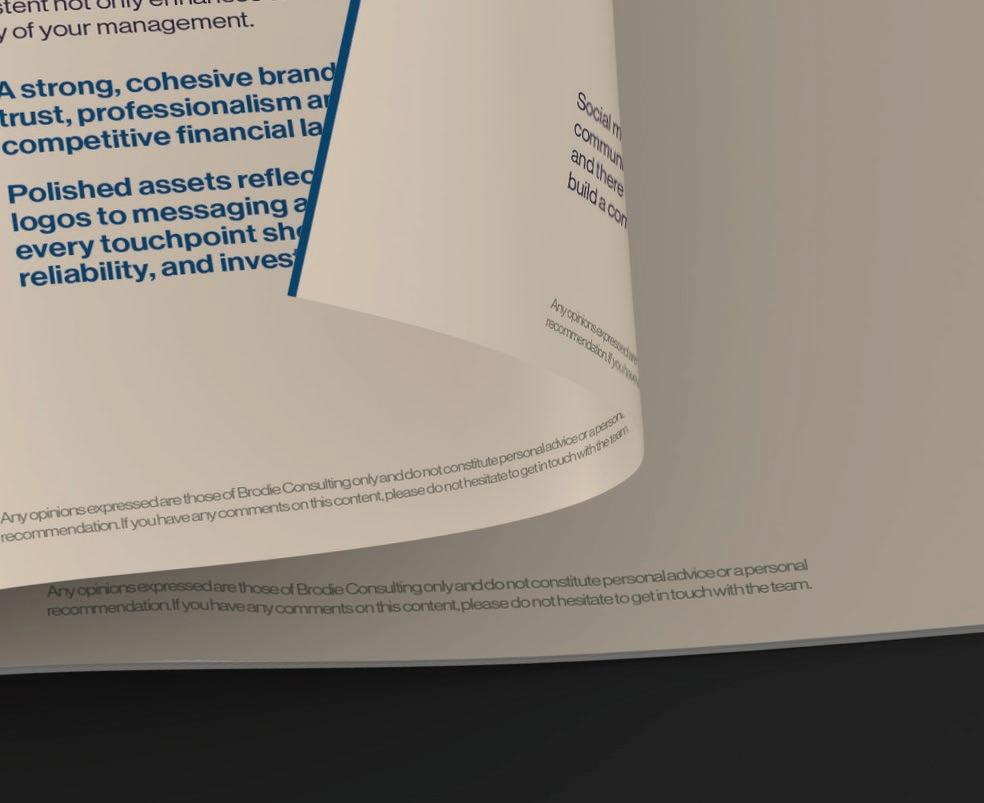


Private market funds operate in a competitive, high-stakes environment where attracting investors is crucial. Strong marketing builds credibility, showcases unique strategies and di erentiates the fund from rivals. With e ective branding, compelling storytelling, and clear value propositions, a fund can establish trust, appeal to institutional investors, and stand out in a crowded market, driving growth and long-term success.









Matthew Podolsky, Vice President of Sales, Vistra
Retailization-the application of retail principles to industries beyond traditional retail-is reshaping global business models. The demand for seamless, intuitive, and highly personalized customer experiences is pushing companies in finance, healthcare, automotive, and real estate to rethink how they engage with their customers.
Once confined to retailers, concepts such as direct-toconsumer engagement, data-driven personalization, and omnichannel strategies are now being implemented in sectors historically dependent on intermediaries and long sales cycles. This evolution is not simply about selling more but about adopting a consumer-centric approach that enhances efficiency, responsiveness, and customer loyalty.
Several macro trends are accelerating the adoption of retail-inspired strategies across industries, and alternative investment funds are no exception. These funds are increasingly recognizing the need to shift toward retail-oriented models as they seek to engage a broader range of investors and meet evolving regulatory demands.
1.
In recent years, alternative investment funds have faced increasing pressure from retail investors who are looking for more accessible, transparent, and flexible investment options. These investors are not just high-net-worth individuals but are also from the growing middle market, eager for greater participation in assets like private equity, hedge funds, and real estate. Fund houses are now tasked with adapting their offerings to meet these demands, shifting away from traditional institutional-focused models to ones that are more accessible and user-friendly for retail investors.
2. Regulatory Developments
Recent regulatory shifts are also driving this change. As regulators create frameworks that
make it easier for retail investors to access alternative investment products, fund managers must ensure that they comply with these new rules while maintaining their competitive edge. This includes adapting internal processes, technology platforms, and investor communication strategies to comply with regulatory requirements while meeting the demand for more transparent and timely reporting.
3. Evolution of Fund Models
Fund houses traditionally servicing large institutional clients are now having to rethink their business models entirely. The complexity of managing retail funds requires a different level of attention to investor communication, data transparency, and digital access. This is not just about scaling up operations but about evolving operational practices to provide a level of service that meets the needs of a larger, more diverse investor base. Fund administrators accustomed to working with institutional investors may find themselves ill-prepared to handle the larger volumes, smaller individual investments, and more frequent transactions that come with a retail client base. As such, it’s critical for fund managers to partner with providers that have the expertise in servicing retail funds.
Furthermore, data accessibility and flexibility are becoming more important than ever. Fund houses must ensure that investors can easily access their data, whether they are deciding to remain invested or exit the fund. Clear strategies for data access and the eventual exit process must be in place to ensure that investors feel confident and informed throughout their investment journey.
For alternative funds moving into the retail space, it’s important to recognize the opportunities as well as the challenges. One major challenge is ensuring that fund administrators can handle the

complexity and volume of a retail fund. Retail funds are typically characterized by a higher volume of smaller investors, which can lead to a more laborintensive administrative process. Administrators used to work with large institutional clients may not be prepared for the operational demands of retail investors.
It’s vital for funds to work with administrators who not only understand the intricacies of retail investment strategies but also have the capacity to scale as the fund grows. Fund managers must also understand where they fit within the wider market. Are they catering to smaller investors, or is their fund likely to attract larger institutional investors as well? Understanding this dynamic is key to selecting the right administrative partner and ensuring a smooth transition to a more retail-focused model.
Retailization is a rapidly growing trend in the alternative investment world, with fund houses recognizing
the need to adjust their business models to cater to a wider investor base. This transition isn’t just about changing the type of investor a fund attracts but involves reevaluating the way fund managers think about investor experience, reporting transparency, and data accessibility.
As the alternative investment world evolves, the business models that support it must evolve as well. Fund managers must consider how they can remain competitive by embracing retailization and ensuring that their services meet the demands of both retail investors and regulatory bodies. Those that successfully transition to this new model will not only expand their investor base but also secure long-term growth in an increasingly retail-driven
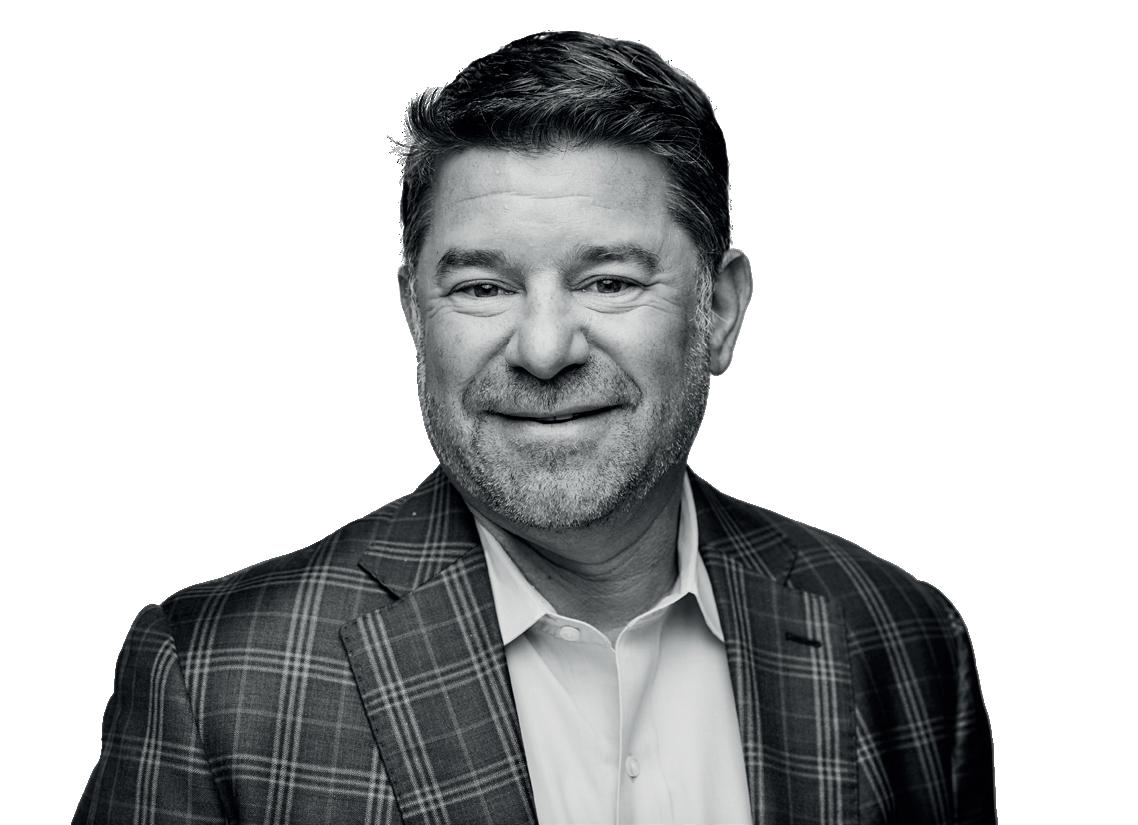
Podolsky, Vice President of


This transition [to retailization] isn’t just about changing the type of investor a fund attracts but involves reevaluating the way fund managers think about investor experience, reporting transparency, and data accessibility.


Following the Asset Management & Alternatives portfolio letter, the Financial Conduct Authority (“FCA”) on 5 March 2025 published its Multi-firm review of private market valuation practices, alongside a press release asserting that the growth of private markets requires a continued focus on valuations.
The regulator’s review of private market valuation processes identified some sound practice, but also some room for improvement.
The review was prompted by a significant growth in private markets in recent years, which includes retail investors being increasingly exposed to the sector. Since private market assets lack the frequent trading and regular price discovery present in more liquid public markets, robust valuation practices are integral to establish fairness and confidence in private markets.
Findings are relevant to both UK firms and international stakeholders, as global valuation standards evolve.
High-level observations: areas of good practice and areas needing improvement
Good practice in:
Quality of reporting to investors
Documenting valuations
Use of third-party valuation advisers
Consistent application of valuation methodologies
Detailed findings
Among the issues identified were:
(i) Conflicts of interest
While most firms identified conflicts in valuation processes around fees and remuneration, other potential conflicts were only partially identified and documented.
The FCA identified several areas where a conflict may arise. This includes with respect to investor fees, asset transfers, redemptions and subscriptions, investor marketing materials, secured borrowing and employee remuneration.
(ii) Functional independence and expertise
Some firms demonstrated functional independence, including maintaining a dedicated valuation function, staffed by people independent of the portfolio management function and with valuation expertise. Where firms sought views from investment professionals, these were segregated and clearly documented.
Needing improvement:
Conflicts of interest: potential conflicts needing to be better recognised and documented
Functional independence and expertise in valuation functions and valuation committees
Ad hoc valuations: Lack of defined processes or a consistent approach for ad hoc valuations to revalue assets during market or asset-specific events
Such firms also ensure the valuation committee’s voting membership is sufficiently independent and competent. Other approaches were observed, with the FCA indicating that firms should consider a proportionate approach, taking into account their size and the materiality of any conflicts of interest they are seeking to manage. Notwithstanding this, the FCA will be following up with certain firms that have investment professionals as voting members on the valuation committee, to understand how their position is consistent with the independence of valuation decisions made.
(iii) Policies, procedures and documentation
The FCA’s observations cover:
• Valuation policies: Not all firms provided detail on the rationale for selecting valuation policies, the governance arrangements, the frequency of valuation, the methodologies used or the relevant investment strategies and accounting standards;



• Valuation models: In some cases, vague rationales were given for key assumption changes, such as adjustments in discount rates;
• Auditors: Lack of description as to how the firm involves external auditors in the valuation process and supports them to perform their role; and
• Back-testing: Good practice includes using the results of back-testing to inform a firm’s approach to valuations.
(iv) Frequency and ad hoc valuations
Generally, the FCA does not take issue with the frequency of periodic valuations, which usually occur quarterly (with debt assets also having monthly valuations). Ad hoc valuations, made outside the regular valuation schedule, reduce the risk of stale valuations if material events cause significant changes to market conditions. To mitigate this risk, the FCA recommends firms add a defined process, setting thresholds or triggering events for an ad hoc valuation.
(v) Investor transparency
There is no “one-size-fits-all” approach to investor transparency, with respect to the information provided (NAV, individual asset values, valuation policy, etc) and the disclosure type (not disclosed, available upon request, regular reporting, etc).
Most firms demonstrated good practice by reporting quantitative and qualitative information on performance at both the fund and asset level.
However, firms should consider how they can improve investor transparency.
(vi) Application of valuation methodologies
The FCA reviewed the consistency of how firms apply valuation methodologies and assumptions, including where they made significant adjustments.
Firms demonstrating good practice made use of another established methodology as a sense check.
(vii) Use of third-party valuation advisers
Firms demonstrating good practice selected third-party valuation advisers after identifying material conflicts, considering the limitations of the service provided, ensuring the independence of the third-party adviser and noting that the firm retains responsibility for valuation decisions.
The FCA expects firms to consider the findings of the review and make improvements where necessary. In particular, they should consider:
• The governance of a firm’s valuation process;
• Identifying, documenting and addressing potential conflicts in their valuation process;
• Ensuring functional independence for their valuation process; and
• Incorporating defined processes for ad hoc valuations.
The FCA will continue to engage with firms and industry bodies and will carry out further work focussing on conflicts of interest in private markets.

On 25 March 2025, the FCA launched a new five-year (2025-2030) strategy: “to deepen trust, rebalance risk, support growth and improve lives”.
The strategy aligns with a broader government aspiration for regulators and regulation to support UK growth. This initiative was recently articulated in a government policy paper, which builds on previous communications, including the Chancellor of the Exchequer’s Mansion House speech and exchanges between senior politicians and the FCA’s CEO.
The FCA’s strategy notes particular regulatory opportunities and challenges in the run-up to 2030:
• Technology: in an era of dramatic technological change, AI could transform financial services. Financial markets need to help businesses and consumers benefit from progress, while managing the risks;
• Growth: Financial services support growth by providing capital to businesses. Through innovation they can become more competitive, boosting sales and exports. They can also help consumers become more resilient and make the most of their money;
• Geopolitical uncertainty: leading to market volatility. Financial services can help businesses and consumers manage and adapt;
• Financial resilience: Over seven million UK residents

struggle to pay their bills and are ill-equipped to weather financial headwinds. Financial services can help improve their financial lives; and
• Demographic change: an ageing population, with fewer people of working age, stretches public finances. Financial services can help citizens save for a longer later life.
The FCA aspires to:
• Be a smarter regulator, including a more flexible approach to how it regulates, including removing unnecessary data collection requirements;
• Support growth, including facilitating investment and innovation, and ensuring UK financial services are competitive internationally;
• Help consumers navigate their financial lives; and
• Fight financial crime.
On the same day as publishing the five-year strategy, the FCA published a Feedback Statement on more immediate plans for action and further plans for reviewing FCA requirements. The FCA’s plans include retiring more than one hundred pages of outdated guidance, reviewing prescriptive client disclosure rules, revisiting rules for businesses with customers outside of the UK and addressing confusing, outdated or conflicting Handbook requirements.

Once Europe's longest established single manager hedge fund, Odey Asset Management (“OAM”), established in 1991, is presently winding down and no longer conducts regulated activities.
On 17 March 2025, the FCA specified the action it would take against Crispin Odey, OAM’s erstwhile founder and majority shareholder – namely, to fine him £1.8 million and
ban him from the UK financial services industry for a lack of integrity.
The conduct prompting this decision was enumerated in the FCA’s November 2024 Warning Notice Statement, but was not the FCA’s final decision.
Since then, the regulator has elaborated on its findings with a 3 March 2025 Decision Notice. Mr Odey waived his rights

to make representations to the FCA’s internal process but referred the Decision Notice to the Upper Tribunal where he and the regulator will present their cases. Its findings are, therefore, still provisional.
Following an internal investigation by OAM into his inappropriate behaviour, Mr Odey received a final written warning from OAM’s executive committee (“ExCo”) on 4 February 2021. A disciplinary hearing to consider whether he had breached the final written warning was scheduled on 30 November 2021 but on 24 December 2021, Mr Odey used his majority shareholding to remove OAM’s existing ExCo members and appoint himself sole member. Then on 6 January 2022 he decided that the disciplinary hearing into his conduct would be indefinitely postponed, being unable to conduct it with impartiality.
Mr Odey appointed new ExCo members and resigned from the Committee on 12 January 2022 but following disagreement on how to proceed with the disciplinary
Presented by

hearing, he a second time removed OAM’s ExCo members and appointed himself sole member. He remained on Exco until he appointed two new members on 4 July 2022.
The disciplinary hearing was finally held on 29 November 2022, one year after its original scheduled date.
In June 2023, the Financial Times reported allegations, denied by Mr Odey, that he had sexually harassed or assaulted thirteen women over 25 years.
In seeking to protect his own interests, the regulator considers that Mr Odey deliberately sought to frustrate OAM’s disciplinary processes into his conduct, showing a “reckless disregard” for OAM’s governance and causing it to breach certain regulatory requirements. Mr Odey’s conduct towards both OAM and the FCA “lacked candour” and the FCA concludes that he is not a fit and proper person to perform any function related to regulated activities.
The Securities and Exchange Commission (“SEC”) updated its Marketing Rule FAQs, providing new guidance for investment advisers on the application of the Marketing Rule.
This latest update introduced two new responses to questions addressing the presentation in advertisements of extracted performance and certain other portfolio characteristics, such as geographic returns.
Private fund managers will welcome these clarifications, which now allow the presentation in advertisements of extracted gross performance and certain portfolio characteristics, provided they comply with the remaining requirements outlined in the updated FAQ.
In addition, the SEC provided guidance on which metrics may or may not be viewed as “performance” under the Marketing Rule.
Prior to the current Marketing Rule, it was common practice to present gross and net performance at the fund level, but only gross performance for individual investments presented as a case study. In January 2023, the SEC noted through a prior FAQ that the gross and net requirement also applies when presenting the performance of a single investment or any other extracted performance.
In a reversal thereto, the SEC now notes that presenting only gross performance information for a single position or a group of investments is allowable so long as the investment manager prominently displays, in a manner compliant with the Marketing Rule, the gross and net performance of the total portfolio from which the single position or group of positions was extracted.
Portfolio or investment characteristics
The Marketing Rule does not define “performance” and, as a result, investment advisers need to determine whether certain portfolio or investment characteristics are considered “performance” under the Marketing Rule.
In the FAQ, the SEC recognizes that investment advisers “may be unsure whether certain characteristics (e.g., yield, coupon rate, contribution to return, volatility, sector or geographic returns, attribution analyses, the Sharpe ratio, the Sortino ratio and other similar metrics) are “performance” under the rule.”
The SEC goes on to note that such characteristics may be displayed as gross figures without accompanying net figures, as long as the overall portfolio's gross and net performance is clearly presented elsewhere in the advertisement.

Presented by

The SEC’s Division of Corporation Finance recently issued an interpretive letter providing additional insight into what constitutes “reasonable steps” to verify an investor’s accredited investor status under Rule 506(c) of Regulation D, a private offering exemption that permits general solicitation.
The SEC staff’s interpretive letter speaks to some of the uncertainty that had previously deterred widespread use of Rule 506(c), potentially opening the door to more widespread use by investment managers.
The SEC’s staff have agreed that, in the absence of an investment adviser’s knowledge of contrary facts, an investment adviser may reasonably conclude that it has taken “reasonable steps” to verify the investor’s accreditation if the following requirements are met:
• Investors must make a minimum investment of at least the amounts specified below:
» $200,000 for natural persons; or
» $1,000,000 for legal entities.
• The investment adviser obtains written representations from investors confirming:
» The investor is an accredited investor under Rule 501(a); and
» The investment is not financed by third parties for the specific purpose of making the investment.
• The investment adviser does not have actual knowledge contradicting these representations.
We note that the new guidance is a staff interpretive letter, which is not a formal, binding interpretation of the SEC. Although the SEC can ordinarily be expected to respect the staff’s guidance in the absence of differing facts, a court is not required to rely on, or defer to, the letter.
Click here to subscribe to The Alternative Investor; or if you have a question about the publication or a suggestion for a guest article email the team at hello@alternativeinvestorportal.com
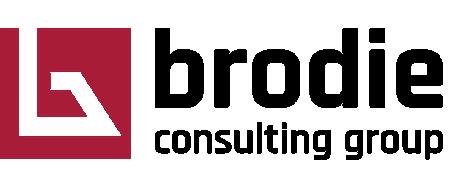
Brodie Consulting Group is an international marketing and communications consultancy, focused largely on the financial services sector. Launched in 2019 by Alastair Crabbe, the former head of marketing and communications at Permal, the Brodie team has extensive experience advising funds on all aspects of their brand, marketing and communications.
Alastair Crabbe Director
Brodie Consulting Group
+44 (0) 778 526 8282 acrabbe@brodiecg.com www.brodiecg.com www.alternativeinvestorportal.com

Capricorn Fund Managers Limited is an investment management and regulatory hosting business that provides regulatory infrastructure and institutional quality operational, compliance and risk oversight. CFM is part of the Capricorn Group, an international family office, which has been involved in alternative assets since 1995.
Jonty Campion
Director
Capricorn Fund Managers
+44 (0) 207 958 9127
jcampion@capricornfundmanagers.com www.capricornfundmanagers.com

RQC Group is an industry-leading crossborder compliance consultancy head-officed in London with a dedicated office in New York, specializing in FCA, SEC and CFTC/NFA Compliance Consulting and Regulatory Hosting services, with an elite team of compliance experts servicing over 150 clients, and providing regulatory platforms to host over 60 firms.
United Kingdom: +44 (0) 207 958 9127 contact-uk@rqcgroup.com
United States: +1 (646) 751 8726 contact-us@rqcgroup.com www.rqcgroup.com
Capricorn Fund Managers and RQC Group are proud members of

Alastair Crabbe acrabbe@brodiecg.com
Darryl Noik dnoik@capricornfundmanagers.com
Jonty Campion jcampion@capricornfundmanagers.com
Lynda Stoelker lstoelker@capricornfundmanagers.com

Visit www.alternativeinvestorportal.com

